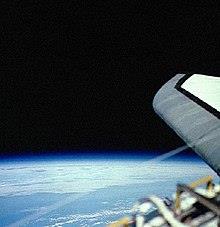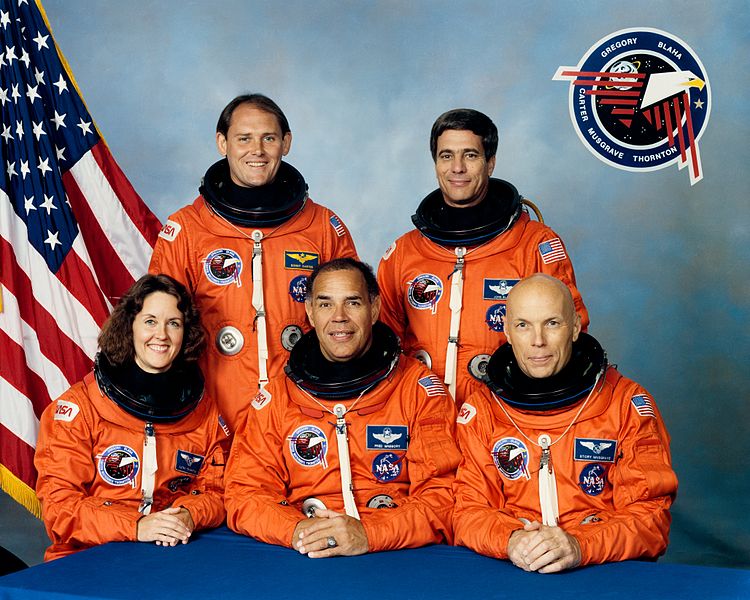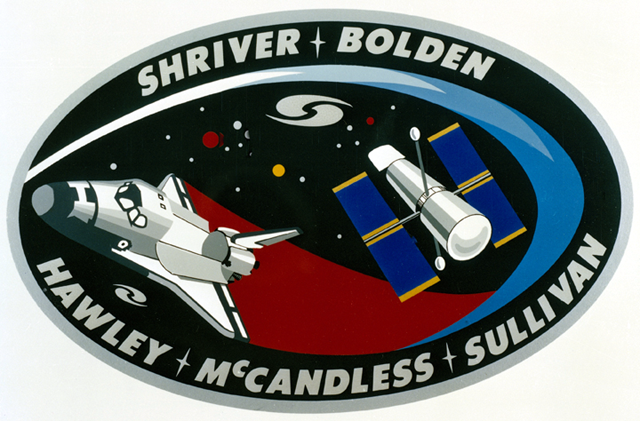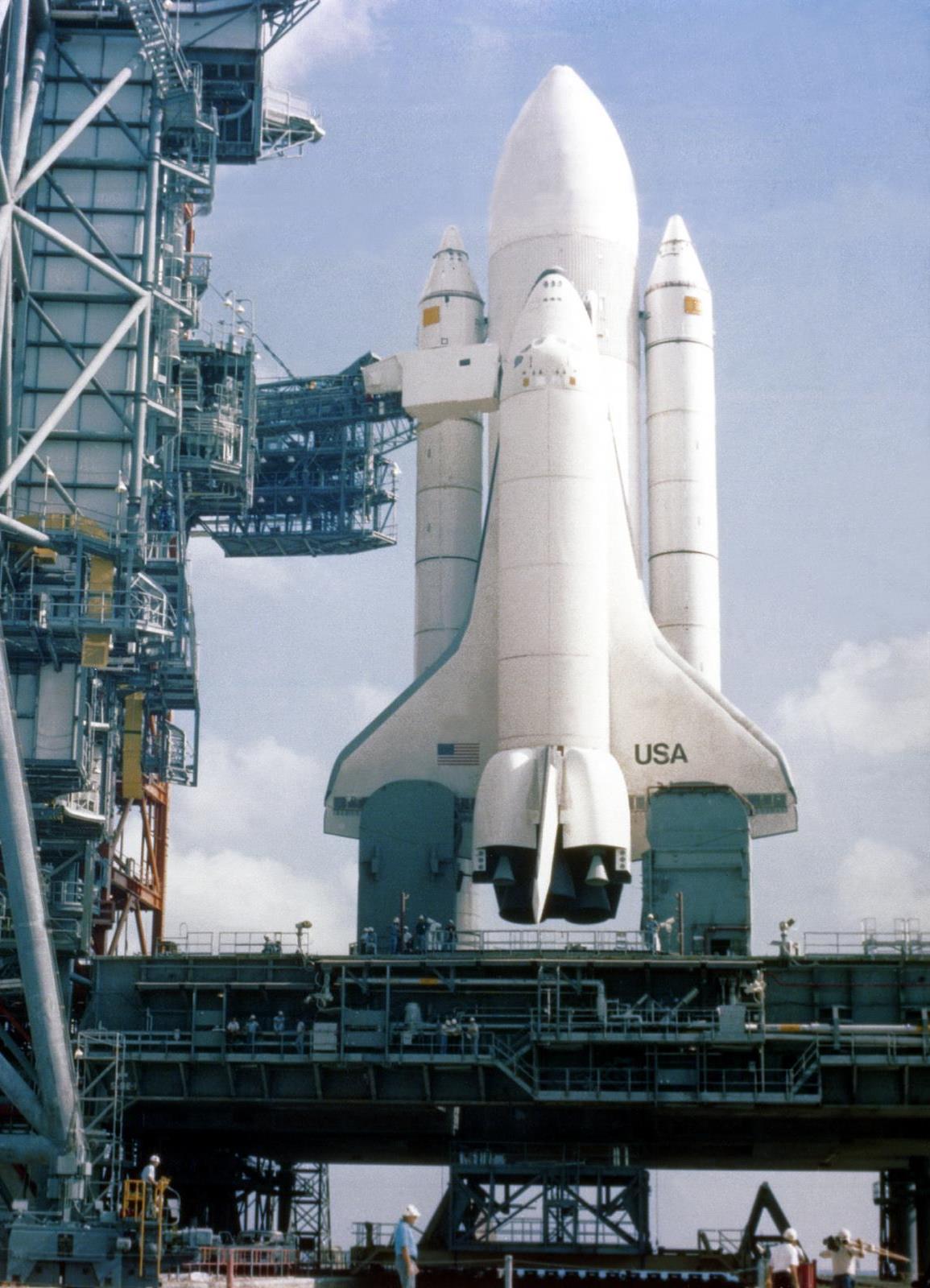Frederick D. Gregory
(Second Space Flight)
Pilot:
John E. Blaha
(Second Space Flight) Mission Specialist 1:
F. Story Musgrave
(Third Space Flight) Mission Specialist 2:
Manley L. Carter Jr.
(Only Space Flight) Mission Specialist 3:
Kathryn C. Thornton
(First Space Flight)
STS-33 was a NASA Space Shuttle mission, during which Space Shuttle Discovery deployed a payload for the United States Department of Denfense (DoD) STS-33 was the 32nd shuttle mission overall, the ninth flight of Discovery, and the fifth shuttle mission in support of the DoD. Due to the nature of the mission, specific details remain classified. Discovery lifted off from Pad A, Launch Complex 39 at Kennedy
A free template by Lucknowwebs.com for WYSIWYG WebBuilder 8
Astronauts:
The Space Shuttle Missions
STS-33 (R)
Study
Research
Main Index
Space Cosmology
Science Research
*
About
Science Research
Science Theories
Desk
Site Map
BookShelf
Copyright © by Nigel G Wilcox · All Rights reserved · E-Mail: ngwilcox100@gmail.com
Designed by Nigel G Wilcox
Powered By AM3L1A
Pages within this section: USA Shuttle Mission Flights
STS-33
Pages within this section:
32
M
8
SM
Sub-Menu
menu
-
33
34
35
36
37
38
39
Command Pilot:
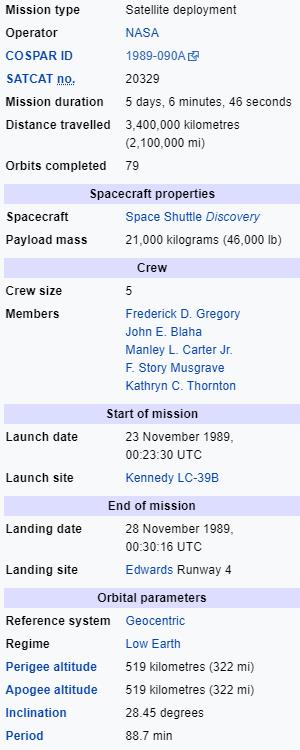
STS-33R was originally scheduled to launch on 20 November, but was delayed because of problems with the integrated electronics assemblies which controlled the ignition and separation of the shuttle's solid rocket boosters. STS-33R was the third night launch of the Space Shuttle program, and the first since shuttle flights resumed in 1988 following the Challenger disaster of 1986.
During the mission, Discovery deployed a single satellite, USA-48 (NSSDC ID 1989-090B). Experts believe that this was a secret Magnum ELINT (ELectronic INTtelligence) satellite headed for geosynchronous orbit, similar to that launched by STS-51-C in 1985, making this mission essentially a duplicate of that earlier mission. According to Jim Slade of ABC News, USA-48 was intended to eavesdrop on military and diplomatic communications from the Soviet Union, China, and other communist states. The satellite deployed by STS-33R was a replacement for the one launched by STS-51-C, which was running out of the maneuvering fuel required for keeping its station over the Indian Ocean. However, astronaut Gary Payton stated in 2009 that STS-51-C's payload is "still up there, and still operating."
Aviation Week claimed that during STS-33R, the shuttle initially entered a 204 kilometres (127 mi) x 519 kilometres (322 mi) orbit at an inclination of 28.45 degrees to the equator. It then executed three Orbital Manoeuvering System (OMS) burns, the last on its fourth orbit. The first burn was to circularize the orbit at 519 kilometres (322 mi).
The satellite was deployed on the 7th orbit, and ignited its Inertial Upper Stage (IUS) booster at the ascending node of the 8th orbit, successfully placing it in a geosynchronous transfer orbit. This was the 8th IUS launched aboard the shuttle, and the seventh successfully deployed.
STS-33R suffered a cabin leak in the Waste Collection System.
STS-33R was observed by the 1.6m telescope of the US Air Force Maui Optical Station (AMOS) during five passes over Hawaii. Spectrographic and infrared images of the shuttle obtained with the Enhanced Longwave Spectral Imager (ELSI) were aimed at studying the interactions between gases released by the shuttle's primary reaction control system and residual atmospheric oxygen and nitrogen species in orbit.
